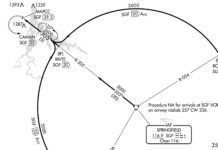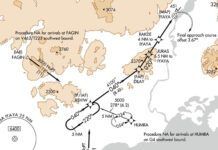As a CFII, I do plenty of recurrency training for instrument flyers as a safety pilot and coach and as an instructor conducting an IPC. I like to use the IPC content as a starting point. Here’s a typical example:
Joe owns an RNAV-equipped Cessna 182RG and flies about 200 hours a year for family and business. For the last three years, he and an instrument-rated buddy committed to practicing at least two approaches apiece monthly. But recently his friend was busy, so Joe logged just three coupled approaches during his regular travels. He wanted a safety pilot so he could maintain currency, plus an instructor to help him get more confident with ILS approaches, which he rarely flies on his trips.
During an initial ground session, Joe’s logbook revealed a monthly routine that lacked items like circling approaches and partial panel work. Plus he only infrequently flew ILS approaches or flew in busy airspace like Class B, and when he did it was usually just practice with his friend.
While it would have been simple enough to take a couple of hours to shoot the requisite approaches and a hold and call it good, we instead agreed that he should do more. He knew he’d be rusty on emergency procedures and couldn’t remember the last time he hand-flew a procedure turn. We booked a flight session over the weekend and I sent him home with an IPC syllabus to study.
It was marginal VFR with 1,000-foot ceilings the day of our flight, so we filed IFR and opted to use Foggles when not in IMC. We punched in a route for a DME arc to a LOC/DME approach. Since winds were a quartering tailwind at 15 knots for the runway, Joe flew a circle-to-land.
The hand-flown approach was fine, but his circle was high and fast, so we asked ATC for a repeat. The next one was much better, so we proceeded to the VOR/DME with vectors. With a simulated vacuum failure, Joe shot the approach to minimums, went missed and did his hold.
Next stop was an ILS with a direct crosswind on final. We asked Approach for the published procedure turn, and after Joe got established, he flew it under the hood to 200 feet and landed. He nailed the PT and the glideslope, even when I deactivated the moving map, but he chased the localizer all the way down. To wrap up, we got a clearance to climb on top to 6500 feet and worked on unusual attitude recoveries. Joe had some rust showing, so we rehearsed some easy ones then progressed to steeper banks and edge-of-stall recoveries.
At the end of the day, Joe was comfortably current, but not comfortably proficient with some operations. The flight was a useful assessment of what he would be willing to handle single-pilot. He decided to fly another dual session in two weeks with more unusual attitudes, circles-to-land and ILS work on the agenda. Even better, he could use that for his flight review, which was coming up.
Now, about that buddy of his… —EK




